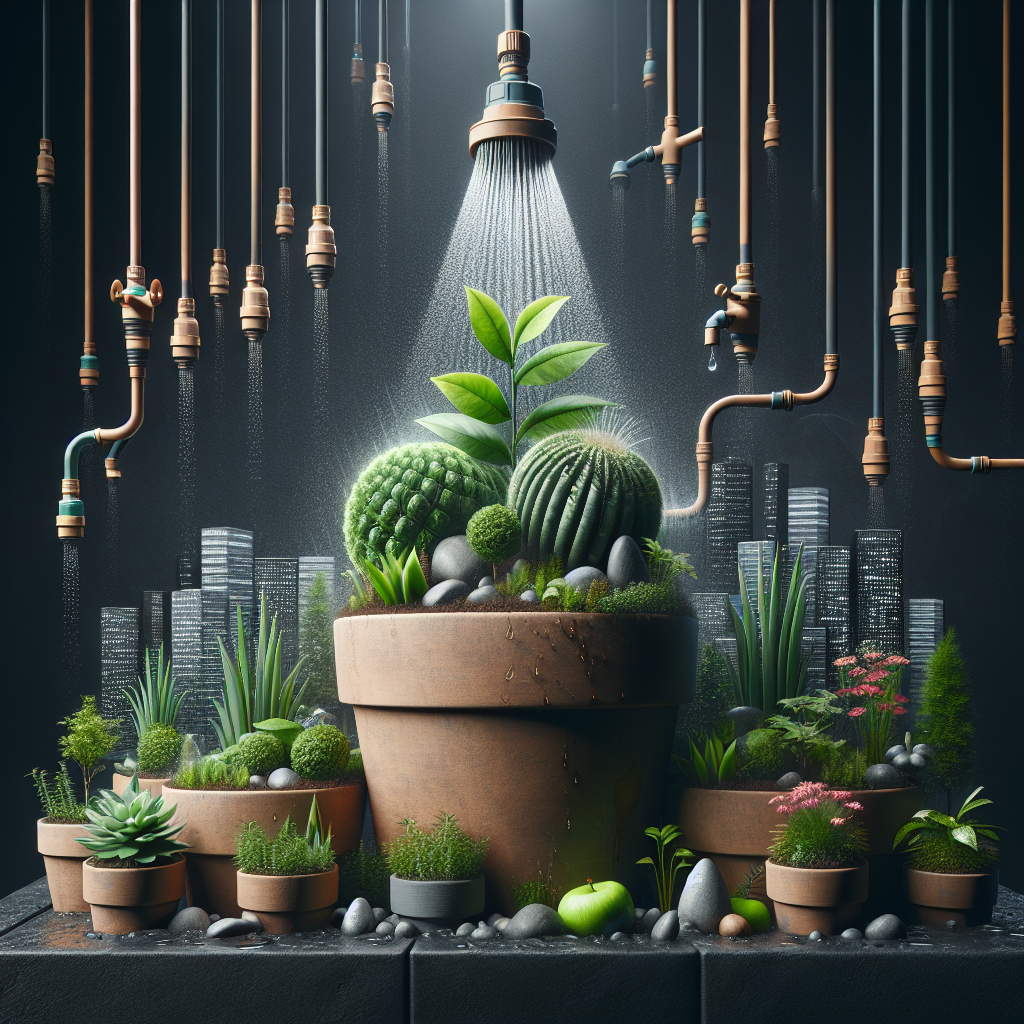With the increasing focus on environmental sustainability, many people are looking for ways to make their daily activities more eco-friendly. One area where this is particularly important is in gardening, as water usage can be a significant concern. For those who love to grow plants in pots, utilizing a slow drip watering system can be a great way to conserve water while still keeping your plants healthy and thriving.
Slow drip watering systems are a popular choice for many gardeners because they provide a gentle and consistent flow of water directly to the roots of the plants. This method of watering helps to prevent water wastage by minimizing runoff and evaporation, ensuring that the plants receive exactly what they need without excess water being lost. In addition to being environmentally friendly, slow drip systems can also save you time and effort by reducing the need for frequent watering. Let’s dive deeper into the advantages of using slow drip systems for pots in this article.
**Benefits of Slow Drip Systems for Pots**
Slow drip systems offer several advantages over traditional watering methods when it comes to potted plants. One of the key benefits is that they promote deeper root growth by encouraging the plants to seek out moisture at lower levels in the soil. This can lead to stronger, healthier plants that are more resilient to drought conditions.
Another advantage of slow drip systems is that they help to prevent overwatering, which can be a common issue with potted plants. By delivering water directly to the roots at a slow and steady pace, these systems allow the plants to absorb moisture more efficiently without becoming waterlogged. Overwatering can lead to root rot and other problems, so using a slow drip system can help prevent these issues from occurring.
**Water Conservation**
In addition to promoting healthy plant growth, slow drip systems are also great for conserving water. Traditional methods of watering, such as using a hose or watering can, can result in a significant amount of water being wasted through runoff and evaporation. By contrast, slow drip systems deliver water directly to the roots where it is needed most, minimizing waste and maximizing efficiency.
According to the Environmental Protection Agency (EPA), using a slow drip system can reduce water usage by up to 50% compared to traditional methods of watering. This not only helps you save money on your water bill but also contributes to conservation efforts by reducing overall water consumption.
**Ease of Use**
One of the reasons why many gardeners love using slow drip systems is that they are incredibly easy to set up and maintain. Most systems consist of a few basic components, such as tubing, emitters, and connectors, which can be easily assembled without any specialized tools or expertise. Once installed, all you need to do is connect the system to a water source and set it on a timer or adjust the flow rate as needed.
Because slow drip systems deliver water directly where it is needed most – at the roots – you won’t have to worry about getting water on the foliage or causing damage to delicate leaves and flowers. This precision targeting ensures that your plants receive exactly what they need without any unnecessary waste or mess.
**FAQs**
Q: Can I use a slow drip system for all types of potted plants?
A: Yes! Slow drip systems work well for most types of potted plants, including flowers, herbs, vegetables, and even small trees or shrubs.
Q: How often should I water my plants with a slow drip system?
A: The frequency of watering will depend on factors such as plant type, soil type, temperature, and humidity levels. It’s best to monitor your plants regularly and adjust your watering schedule accordingly.
Q: Do I need any special tools or equipment to set up a slow drip system?
A: While there are kits available specifically designed for setting up slow drip systems, you can also easily create your own custom system using basic components like tubing and emitters from your local gardening store.
In conclusion…
Using a slow drip system for pots offers numerous benefits for both your plants and the environment. By providing consistent moisture directly at the roots while minimizing waste and runoff, these systems promote healthy plant growth while conserving precious resources like water. Whether you’re new to gardening or looking for ways to make your current routine more sustainable, consider incorporating a slow drip system into your watering practices – your plants (and Mother Earth) will thank you!













